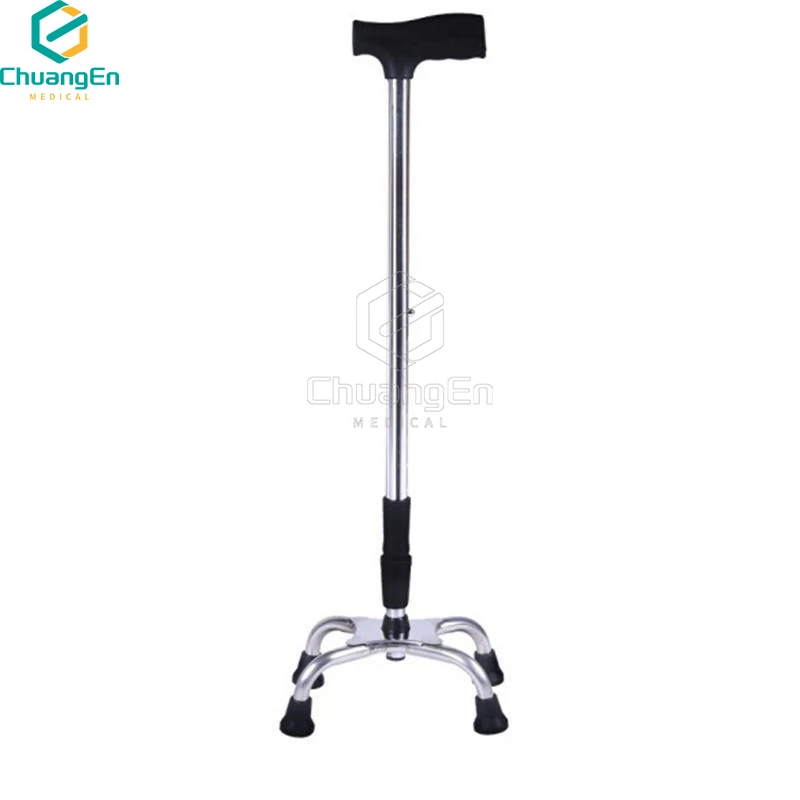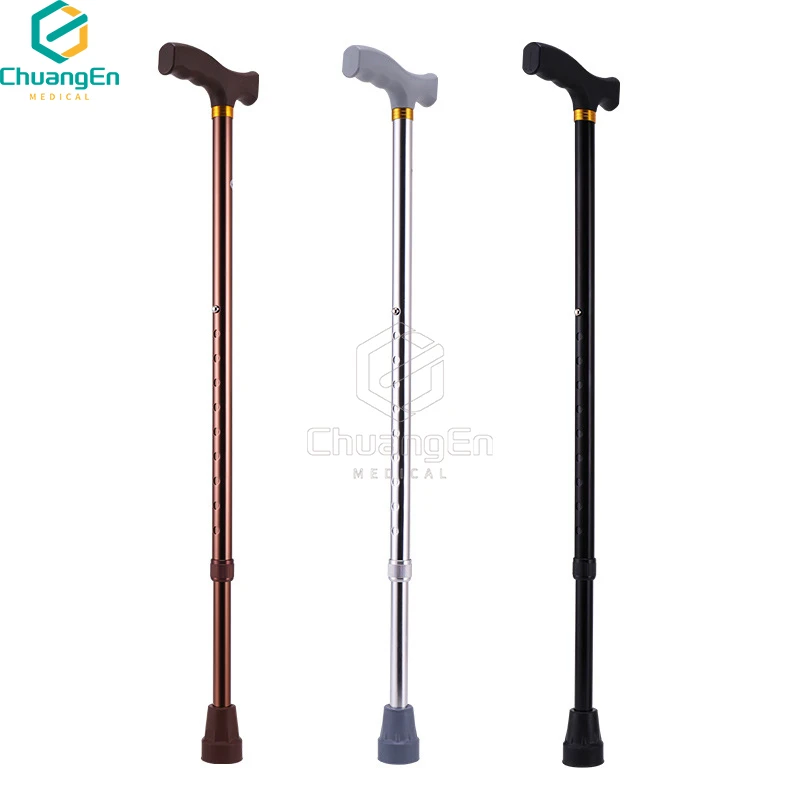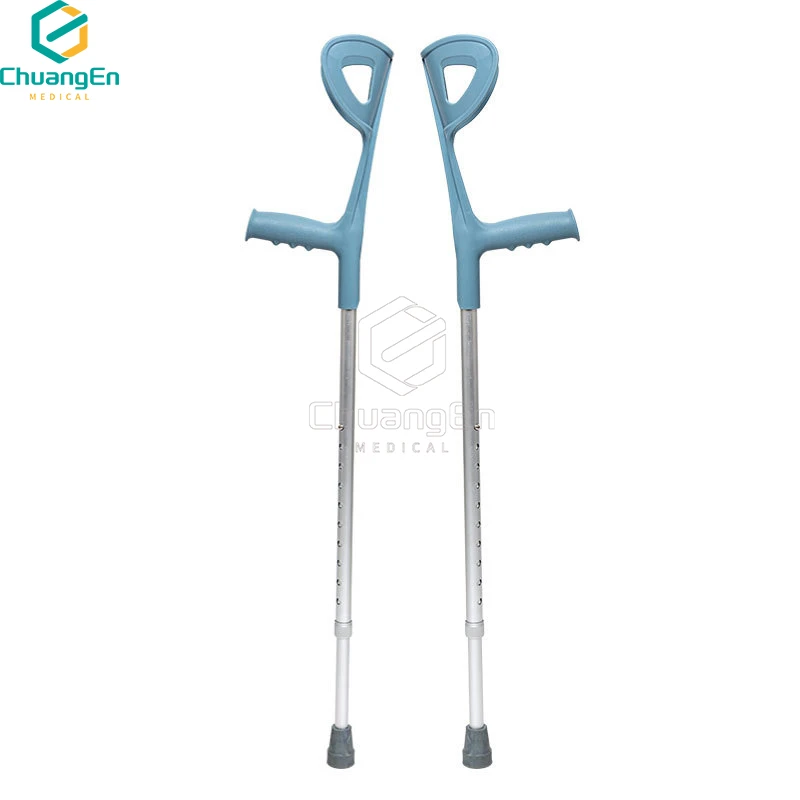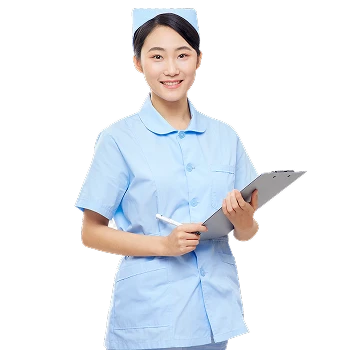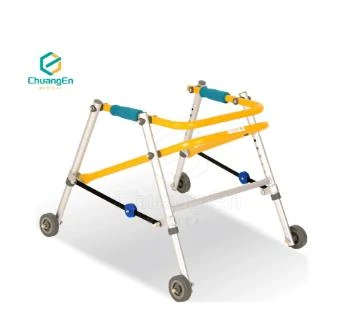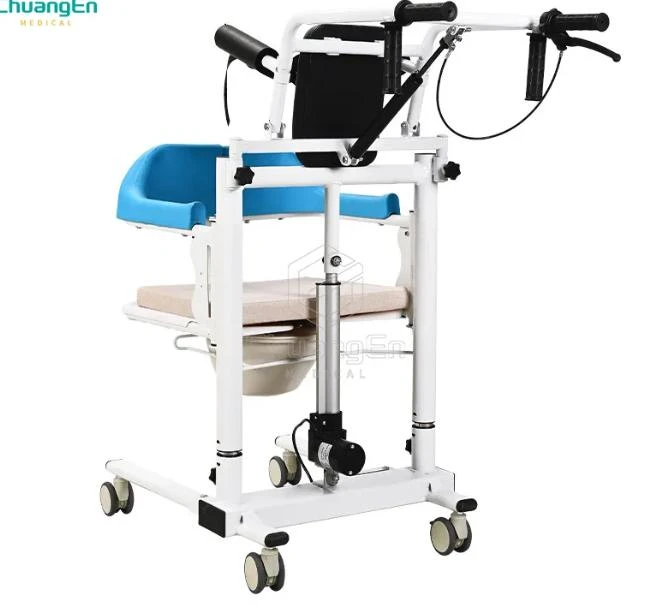The landscape of healthcare and personal assistance is continually evolving, driven by an aging global population and an increasing emphasis on home care and rehabilitation. Within this dynamic environment, the transfer chair has emerged as an indispensable tool, significantly enhancing the quality of life for individuals with mobility challenges and easing the burden on caregivers. These innovative devices, also known as `easy transfer chair`, `lift transfer chair`, `manual lift chair`, `transfer lift chair`, `transfer chair lift`, `manual patient lift`, `patient lifting chair`, or `portable patient lift`, represent a critical advancement in accessible care, bridging the gap between independence and necessary assistance.
Industry Trends and the Evolution of Patient Mobility Solutions
The global market for patient handling and lifting equipment is experiencing robust growth, projected to reach over $11 billion by 2027, with a compound annual growth rate (CAGR) exceeding 6% from 2022 to 2027. This growth is primarily fueled by demographic shifts, particularly the increasing elderly population prone to chronic conditions requiring assistance. Furthermore, the rising prevalence of musculoskeletal disorders among caregivers underscores the urgent need for ergonomic and efficient transfer solutions. The trend towards home healthcare, driven by cost-effectiveness and patient preference, further amplifies the demand for versatile and user-friendly devices like the transfer chair.
Technological advancements are shaping the next generation of transfer chair products. While automated and electric models offer advanced features, the demand for reliable, cost-effective `manual patient lift` solutions remains strong, especially for personal home use and settings where simplicity and durability are paramount. Innovations focus on improving safety features, enhancing maneuverability with advanced `universal wheel` designs, and incorporating more comfortable materials. Furthermore, the integration of modular designs allows for greater customization and adaptability to diverse patient needs and environmental challenges, from navigating narrow doorways to facilitating transfers over various surfaces.
Chuangen CZY-Y01: A Closer Look at Technical Parameters and Design
The Chuangen CZY-Y01 Manual Transfering Patient Lift Universal Wheel Transfer Lift Chair For Disabled And Elderly stands out in the market for its blend of robust construction, user-centric design, and operational simplicity. This `manual lift chair` is engineered to provide secure and effortless transfers, significantly reducing the physical strain on both patients and caregivers. Understanding its technical parameters is crucial to appreciating its capabilities and suitability for various applications.
Key Product Specifications:
- Product Name: Chuangen CZY-Y01 Manual Transfering Patient Lift Universal Wheel Transfer Lift Chair For Disabled And Elderly
- Product Model: CZY-Y01
- Material: High-strength steel alloy (often Q235B or similar for main frame), ABS plastic for seat and backrest. This choice of material ensures exceptional durability and a high load-bearing capacity while maintaining a manageable weight for ease of use.
- Weight Capacity: Typically ranges from 120kg to 150kg (approx. 265-330 lbs), accommodating a wide range of users. This high capacity is a testament to its sturdy construction and engineering design.
- Product Weight: Approximately 20-25 kg (44-55 lbs), making it relatively lightweight for a device of its capability, aiding in its portability.
- Wheel Type: Equipped with silent `universal wheel` casters, usually with locking mechanisms. These medical-grade wheels are designed for smooth rolling on various indoor surfaces and provide stability when the chair is stationary. The 360-degree rotation of the universal wheels ensures superior maneuverability in tight spaces, which is critical in home or hospital environments.
- Lift Mechanism: Manual crank or hydraulic pump mechanism for height adjustment, offering precise control over the lifting process. This `manual patient lift` mechanism is simple to operate and does not rely on electricity, making it reliable in any setting.
- Seat Material: Padded PU or ABS seat with drainage holes, designed for comfort and ease of cleaning, ensuring hygiene.
- Dimensions (Approximate):
- Overall Height: 90-110 cm (adjustable)
- Overall Width: 55-65 cm
- Overall Length: 70-80 cm
- Seat Height Range: 40-60 cm (adjustable from ground)
- Braking System: Individual wheel locks or integrated foot pedal brake system for secure positioning during transfers.
- Assembly: Generally minimal assembly required, often arriving mostly pre-assembled for immediate use.
These specifications are critical for assessing the chair's performance, safety, and suitability. For instance, the high weight capacity ensures it can serve a broad patient demographic, while the `universal wheel` design facilitates navigation in confined spaces, a common challenge in residential settings. The manual lift mechanism offers reliability and independence from power sources, a significant advantage in emergency situations or areas with unreliable electricity.
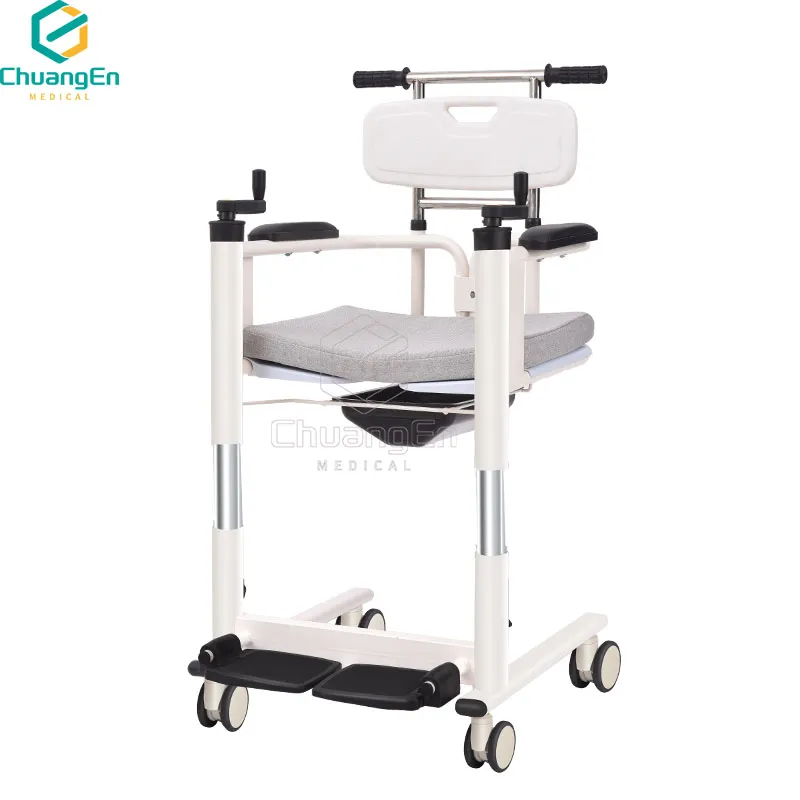
Comprehensive Application Scenarios for the Chuangen CZY-Y01
The versatility of the Chuangen CZY-Y01 transfer chair allows its application across a broad spectrum of care environments, making it an invaluable asset for improving patient mobility and caregiver safety. Its design addresses the fundamental need for secure and dignified patient transfers in various daily situations.
- Home Healthcare: For individuals recovering from surgery, managing chronic conditions, or living with permanent disabilities, the Chuangen CZY-Y01 transforms home environments. It facilitates seamless transfers from bed to wheelchair, wheelchair to toilet, or wheelchair to sofa, empowering patients to maintain a higher degree of independence. The `portable patient lift` aspect is particularly beneficial in private residences where space might be limited.
- Hospitals and Clinics: While hospitals often employ powered `lift transfer chair` systems for acute care, manual models like the CZY-Y01 serve as excellent complements for routine transfers, especially in rehabilitation wards, outpatient clinics, or for patients with lower weight requirements. Their non-reliance on electricity makes them ideal for rapid deployment anywhere.
- Nursing Homes and Long-Term Care Facilities: These institutions constantly manage patient transfers. The Chuangen CZY-Y01 significantly reduces the physical strain on nursing staff, preventing injuries associated with manual lifting. Its durability and ease of cleaning align well with the rigorous demands of such facilities.
- Rehabilitation Centers: In rehab settings, patients are encouraged to regain mobility. The `manual lift chair` can be used as part of a therapeutic routine, providing safe support during exercises that involve transitioning between seated and standing positions, or moving between different therapy stations.
- Assisted Living Facilities: Similar to nursing homes, assisted living environments benefit from the ease and safety provided by this `transfer chair lift`, allowing residents to move between their living spaces, dining areas, and bathrooms with reduced risk.
Technical Advantages and Differentiators of the Chuangen CZY-Y01
The Chuangen CZY-Y01 transfer chair offers several distinct technical advantages that set it apart in the market for patient mobility aids. These advantages are directly linked to its design philosophy of combining safety, ease of use, and durability.
- Enhanced Safety Features: The robust steel frame provides unparalleled stability, minimizing the risk of tipping. The secure safety belt (if equipped) and locking `universal wheel` casters ensure the patient remains safely in place during the transfer process. This design adheres to rigorous safety standards, reducing the likelihood of falls or injuries for both patient and caregiver.
- Effortless Manual Operation: Unlike complex electric lifts, the CZY-Y01's `manual patient lift` mechanism is intuitive and requires minimal training. This simplicity ensures caregivers can operate it effectively without specialized technical skills, making it suitable for a wider range of users, including family caregivers.
- Superior Maneuverability: Equipped with high-quality, 360-degree rotating `universal wheel` casters, the transfer chair can be effortlessly navigated through narrow corridors, around furniture, and into tight bathroom spaces. This agility is crucial in home environments and crowded healthcare facilities where space is often a constraint.
- Durable and Low Maintenance: Constructed from high-strength steel with a powder-coated finish, the CZY-Y01 is resistant to corrosion, chipping, and wear. This robust build ensures a long service life and requires minimal maintenance, translating into a lower total cost of ownership. Its materials are also easy to clean and disinfect, vital for hygiene in healthcare settings.
- Versatile Use Across Surfaces: The sturdy wheel design and frame allow the `lift transfer chair` to be used on various indoor surfaces, including tiles, wood, and low-pile carpets, without compromising stability or ease of movement.
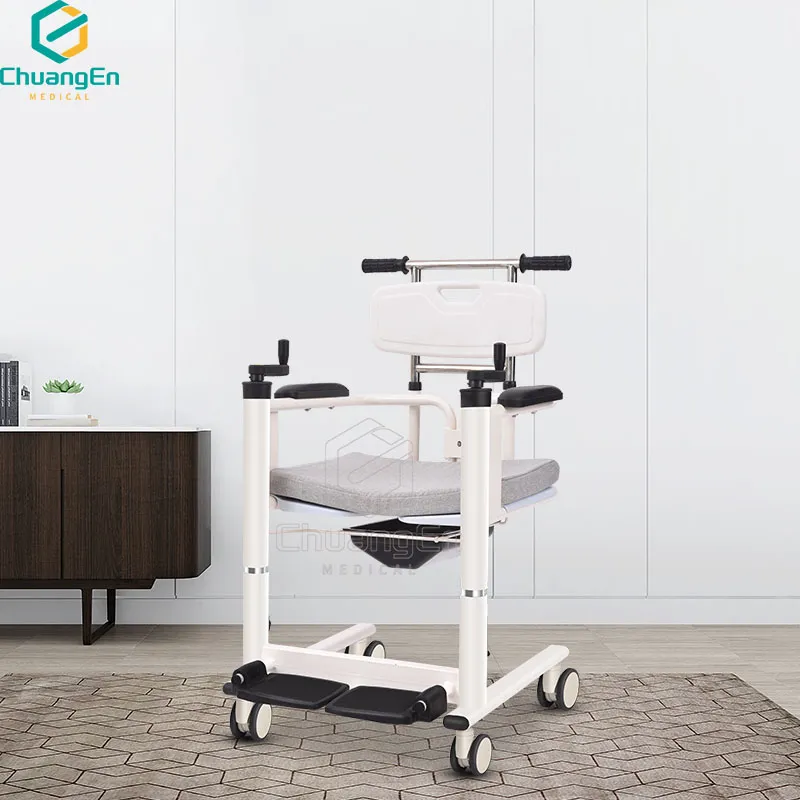
The Craftsmanship Process: Manufacturing the Chuangen CZY-Y01
The manufacturing of a high-quality `patient lifting chair` like the Chuangen CZY-Y01 involves a meticulous multi-stage process, ensuring precision, durability, and compliance with medical device standards. While I cannot display actual diagrams or videos, I can detail the key steps involved in its production, highlighting material selection, manufacturing techniques, and quality control.
Manufacturing Process Overview:
- Material Sourcing and Inspection:
- Material: The primary material for the frame is high-grade steel alloy (e.g., Q235B or equivalent structural steel), selected for its strength-to-weight ratio and cost-effectiveness. ABS plastic is typically used for the seat, backrest, and other non-structural components due to its durability, ease of cleaning, and skin-friendliness.
- Initial Inspection: All raw materials undergo rigorous inspection upon arrival. This includes verifying material composition, dimensions, and surface integrity to ensure they meet specified industry standards (e.g., ASTM, GB/T).
- Precision Cutting and Forming:
- Laser Cutting/CNC Machining: Steel tubes and sheets are precisely cut using advanced laser cutting or CNC (Computer Numerical Control) machining technology. This ensures high accuracy and consistency of components, crucial for perfect fit and function during assembly.
- Bending and Forming: Specialized hydraulic bending machines are used to form the steel tubes into the required frame shapes. This process is carefully controlled to prevent material stress and ensure structural integrity.
- Welding and Assembly (Sub-Assemblies):
- Robotic/Manual Welding: Components of the frame are joined through highly controlled welding processes, often using robotic welding for consistency and strength, supplemented by skilled manual welding for intricate joints. The welding quality is paramount for the `transfer chair`'s load-bearing capacity and overall safety.
- Pre-Assembly of Modules: Sub-assemblies, such as the `universal wheel` base, seat frame, and backrest frame, are assembled and checked for alignment and fit.
- Surface Treatment – Powder Coating:
- Cleaning and Pre-treatment: All metal parts undergo thorough cleaning, degreasing, and phosphating processes to prepare the surface. This ensures optimal adhesion of the coating and provides initial corrosion resistance.
- Electrostatic Powder Coating: Components are then electrostatically coated with a durable powder finish. This method provides a uniform, hard, and corrosion-resistant layer. The powder is then baked in an oven, curing into a smooth, protective finish. This enhances the lifespan of the `portable patient lift` and makes it resistant to scratches and impacts, crucial in healthcare environments where cleanliness and durability are essential.
- Final Assembly:
- Component Integration: The powder-coated frame components are brought together. The `manual patient lift` mechanism (crank or hydraulic), the `universal wheel` casters, seat, backrest, and any auxiliary components (e.g., safety belts, footrests) are meticulously assembled.
- Fastening: High-grade fasteners (bolts, nuts) are used, often with self-locking mechanisms or thread-locking compounds, to ensure secure connections that will not loosen over time.
- Quality Control and Testing:
- Dimensional Checks: Post-assembly, every transfer chair undergoes comprehensive dimensional checks to ensure all measurements comply with design specifications.
- Functional Testing: The `lift transfer chair`'s core functions are tested, including the stability of the `universal wheel` casters, effectiveness of the braking system, smoothness of the lifting mechanism, and the integrity of all locking points.
- Load Testing: Each unit is subjected to load testing, typically exceeding its rated weight capacity, to verify its structural integrity and safety margins. This critical step ensures compliance with international standards such as ISO 10535 (Hoists for the transfer of disabled persons – Requirements and test methods). ANSI standards are also considered for specific markets.
- Finish Inspection: A final visual inspection checks for any surface imperfections, ensuring aesthetic quality and absence of sharp edges.
- Packaging and Shipment:
- Once approved, the transfer chair is securely packaged, often with protective foam and sturdy cardboard boxes, to prevent damage during transit.
This detailed process ensures that each Chuangen CZY-Y01 `transfer chair` meets stringent quality and safety standards, providing a reliable and durable solution for patient transfer needs. The commitment to precision manufacturing and rigorous testing means these chairs can withstand the demands of daily use, ensuring a long and effective service life, typically exceeding 5-7 years with proper maintenance, far surpassing industry averages for manual devices.
Manufacturer Comparison and Chuangen's Competitive Edge
When selecting a transfer chair, prospective buyers often compare various manufacturers based on factors like product quality, innovation, pricing, and after-sales support. While many companies produce patient transfer devices, Chuangen Medical distinguishes itself through several key aspects:
- Specialization and Focus: Chuangen Medical specializes in rehabilitation and nursing equipment. This focused approach allows for deeper expertise and innovation within the niche of patient mobility, ensuring their products, including the CZY-Y01 `manual patient lift`, are designed with specific user needs in mind.
- Quality and Durability: As detailed in the manufacturing process, Chuangen employs high-grade materials and strict quality control measures. This commitment results in a product with superior durability and a longer lifespan compared to many competitors who might use lesser materials to cut costs.
- Cost-Effectiveness: Despite the high quality, Chuangen often offers competitive pricing, providing excellent value for money. This makes the Chuangen CZY-Y01 an accessible choice for both individual consumers and institutional buyers looking for reliable yet affordable `portable patient lift` solutions.
- Compliance and Certifications: Chuangen products typically adhere to international quality management standards like ISO 13485 (Medical devices – Quality management systems – Requirements for regulatory purposes), which is a global benchmark for medical device manufacturing. This demonstrates a commitment to quality and safety, providing peace of mind to users.
- Customer Support and Warranty: Reputable manufacturers like Chuangen provide comprehensive customer support, including clear warranty policies, technical assistance, and access to spare parts. This ensures long-term usability and customer satisfaction.
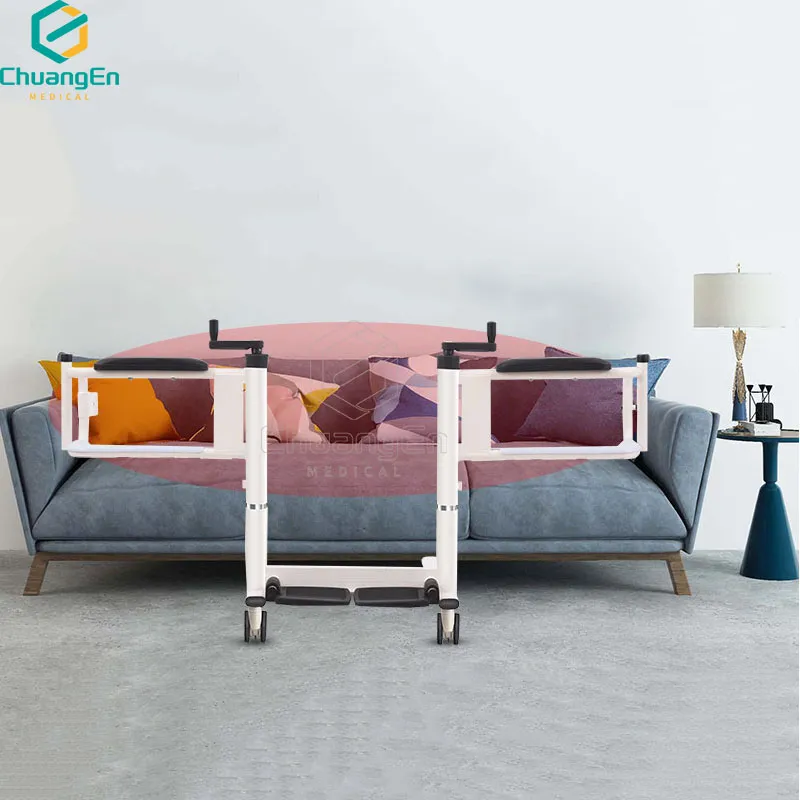
Customization Solutions and Tailored Applications
While the Chuangen CZY-Y01 `patient lifting chair` comes with a standardized design to ensure broad applicability and cost-efficiency, manufacturers often offer or can advise on customization solutions to meet highly specific patient needs or environmental challenges. For a `manual lift chair` like the CZY-Y01, customization typically focuses on accessories or minor modifications rather than fundamental structural changes due to the standardized manufacturing process.
- Accessory Integration:
- Additional Padding: For patients requiring extra comfort due to prolonged sitting or sensitive skin, custom-fit, pressure-relieving cushions can be added to the seat and backrest.
- Specialized Slings/Belts: While the CZY-Y01 has an integrated seat, some patients might benefit from specialized transfer slings used in conjunction with it for added support during the transfer.
- Adjustable Footrests: While standard, some models might offer more adjustable or removable footrests for different patient heights or to facilitate access.
- Surface Compatibility Enhancements:
- For specific industrial or medical environments requiring enhanced anti-corrosion properties (e.g., in highly humid or chemical-exposed settings, though less common for a standard `transfer chair`), specialized coatings could theoretically be applied. However, for the CZY-Y01, its existing powder coating provides excellent general corrosion resistance suitable for most healthcare settings.
- Logistical Adaptations: For bulk orders by institutions, manufacturers can often provide custom labeling, specific packaging requirements, or optimized delivery schedules to align with facility operational needs.
Prospective buyers are encouraged to discuss their specific requirements with Chuangen Medical's sales or technical support team to explore the feasibility of any desired adaptations or recommended accessories that can enhance the utility of the CZY-Y01 `transfer chair` for their unique situation.
Real-World Application Cases and Success Stories
The impact of a reliable transfer chair is best illustrated through its practical application, demonstrating how it enhances safety, dignity, and independence for patients while alleviating strain on caregivers.
- Case Study 1: Empowering Home Care for the Elderly
Mrs. Chen, an 85-year-old living with her daughter, developed mobility issues after a stroke, making transfers from her bed to her `wheelchair` or to the bathroom extremely challenging. Her daughter, while dedicated, struggled with the physical demands, leading to back pain. After acquiring the Chuangen CZY-Y01 `manual patient lift`, the transfer process was revolutionized. The `universal wheel` design allowed the daughter to easily maneuver Mrs. Chen from her bedroom to the adjacent bathroom, even in tight spaces. The simple crank mechanism meant lifting was no longer a strenuous task. Mrs. Chen regained some independence, able to participate in family meals more regularly, and her daughter experienced significant relief from physical strain. This case highlights the CZY-Y01's ability to facilitate safe and `easy transfer chair` operation in a domestic setting, improving both patient and caregiver well-being. - Case Study 2: Improving Efficiency in a Rehabilitation Center
A mid-sized rehabilitation center faced challenges with staff fatigue and minor injuries related to patient transfers, particularly for patients undergoing post-operative recovery or those with temporary mobility impairments. They integrated several Chuangen CZY-Y01 transfer chair units into their daily operations. The robust design and `lift transfer chair` capabilities proved invaluable for moving patients between therapy rooms, from beds to examination tables, and for toileting assistance. Nurses reported a noticeable reduction in physical strain and an increase in transfer efficiency. The manual operation meant the chairs were always ready for use, even during peak times, without concerns about battery charging or electrical outlets. The chairs' durability also meant minimal downtime for maintenance, ensuring continuous patient care. - Case Study 3: Enhancing Dignity in Assisted Living
At the "Golden Years Assisted Living" facility, resident dignity and comfort are top priorities. Mr. Johnson, a resident with advanced arthritis, often required assistance to move from his armchair to his dining table. The facility adopted the Chuangen CZY-Y01 transfer chair. The quiet `universal wheel` movement and smooth lifting mechanism ensured that transfers were gentle and respectful, avoiding jarring movements. The resident expressed greater comfort and less anxiety during transfers, knowing he was securely supported. For the staff, the `patient lifting chair` streamlined their tasks, allowing them to provide more personalized care rather than focusing solely on physical lifting. This demonstrates the CZY-Y01's role in fostering an environment of respect and care.
Data Visualization: Comparative Analysis of Patient Transfer Chairs
To provide a clear perspective on how different types of patient transfer chairs compare, especially highlighting the niche of manual `transfer chair lift` like the Chuangen CZY-Y01, here’s a comparative table. This helps in understanding the trade-offs and optimal use cases for each category.
| Feature | Chuangen CZY-Y01 (Manual Transfer Chair) | Electric Patient Lift (Hoyer Lift Type) | Standing Patient Lift | Slide Board/Sheet |
|---|---|---|---|---|
| Mechanism | Manual crank/hydraulic pump, caregiver-operated `manual lift chair` | Electric motor, battery-powered | Electric motor or manual, assists standing | Patient/caregiver sliding assistance |
| Weight Capacity | 120-150 kg (265-330 lbs) | 180-270 kg (400-600 lbs) | 130-200 kg (300-450 lbs) | Variable, depends on material & technique |
| Maneuverability | High, 360° `universal wheel`, compact design | Moderate, larger footprint, often heavier | High, smaller footprint than electric lifts | Limited to lateral/vertical sliding |
| Power Source | None required, purely mechanical | Rechargeable battery (needs charging) | Rechargeable battery (needs charging) | None |
| Portability | Good (`portable patient lift`), relatively lightweight, can be disassembled | Low, heavy, bulky | Moderate, lighter than full electric lifts | Very high, easily carried |
| Cost (Approx.) | Low to Moderate | High | Moderate to High | Very Low |
| Caregiver Effort | Moderate (requires physical input for lifting/moving) | Low (push buttons to lift/lower) | Low to Moderate (assists standing, still some support) | High (significant physical effort) |
| Best Use Case | Home care, basic institutional transfers, limited budgets, `easy transfer chair` needs | Hospital/nursing home, heavy patients, frequent transfers, max caregiver ease | Rehab, patients with some standing ability, toileting | Short-distance lateral transfers, bed repositioning |
| Safety (Primary) | Stable frame, wheel locks, manual control for precision | Automated safety features, emergency stop | Safety straps, knee support | Can be high risk if not used correctly |
This table clearly illustrates the Chuangen CZY-Y01's strengths: its independence from power, ease of maneuverability, and cost-effectiveness, making it a compelling `manual patient lift` option for various care settings, particularly where simplicity and reliability are prioritized over complex automation.
Frequently Asked Questions (FAQ) about Transfer Chair
To further enhance trustworthiness and provide comprehensive information, here are answers to common questions regarding `transfer chair` devices, including materials, standards, and practical considerations.
- Q1: What materials are commonly used in the construction of a high-quality `transfer chair` like the Chuangen CZY-Y01?
- A1: High-quality `transfer chair` frames are typically constructed from robust materials like high-strength steel alloy (e.g., Q235B or equivalent) or aluminum. These materials provide the necessary structural integrity and load-bearing capacity. Components such as the seat, backrest, and armrests often use durable and easy-to-clean materials like ABS plastic, PU (polyurethane) foam, or padded waterproof fabrics. Wheel casters are usually medical-grade TPR (Thermo-Plastic Rubber) or nylon for smooth, quiet operation and floor protection.
- Q2: What is the average lifespan of a manual `transfer chair`, and what factors affect it?
- A2: A well-maintained manual `transfer chair` like the Chuangen CZY-Y01 can have a lifespan of 5 to 10 years, or even longer. Factors influencing lifespan include the quality of materials and manufacturing (e.g., strong welds, durable powder coating), frequency and intensity of use, adherence to weight capacity limits, and consistent maintenance (e.g., regular cleaning, checking wheel and brake functionality, lubricating moving parts). Proper storage also plays a role in preventing premature wear.
- Q3: Are there specific industry standards or certifications that a reliable `patient lifting chair` should meet?
- A3: Yes, a reliable `patient lifting chair` should ideally comply with international and regional medical device standards. Key standards include ISO 13485 (Quality Management System for Medical Devices), ISO 10535 (Hoists for the transfer of disabled persons - Requirements and test methods), and depending on the market, CE marking for European conformity, and potentially FDA registration for the U.S. These certifications ensure the product meets stringent safety, performance, and quality requirements.
- Q4: How does the `universal wheel` system contribute to the functionality of a `transfer chair`?
- A4: The `universal wheel` system, typically featuring 360-degree swivel casters, is critical for the `transfer chair`'s maneuverability. It allows the chair to be easily rotated and moved in any direction, navigating tight corners, narrow doorways, and cluttered spaces common in homes, hospitals, and nursing facilities. Paired with locking mechanisms, these wheels provide both agility during movement and stability when stationary during transfers.
- Q5: What is the typical delivery cycle for a `transfer chair` after an order is placed?
- A5: The delivery cycle for a `transfer chair` like the Chuangen CZY-Y01 can vary based on inventory levels, shipping destination, and order volume. For in-stock items, domestic delivery might be 3-7 business days. International shipping can range from 2-4 weeks via sea freight or 5-10 days via air freight, depending on customs clearance and the shipping method chosen. Bulk orders or customized solutions may require longer lead times for production and logistics coordination. Chuangen Medical strives to provide clear estimates at the time of order.
- Q6: What kind of warranty and customer support can I expect for the Chuangen CZY-Y01?
- A6: Chuangen Medical typically offers a standard warranty period for its `transfer chair` products, often 1-2 years for the main frame and major components, covering manufacturing defects. Specific warranty terms will be provided with the purchase. Customer support includes technical assistance for setup and troubleshooting, access to spare parts, and guidance on maintenance. Prompt and reliable support is a cornerstone of Chuangen's commitment to customer satisfaction.
- Q7: Can a `manual patient lift` like the CZY-Y01 be used for outdoor transfers?
- A7: While the Chuangen CZY-Y01 `transfer chair` is primarily designed for indoor use on flat, even surfaces, its sturdy construction and durable `universal wheel` casters can generally handle smooth, paved outdoor paths for short distances, such as moving from a porch to a garden patio. However, it is not designed for rough terrain, uneven surfaces, or prolonged outdoor exposure, as this could damage the wheels or frame, and compromise patient safety.
The transfer chair is more than just a piece of equipment; it's a bridge to greater independence and a tool for compassionate care. Its ongoing evolution reflects a societal commitment to supporting individuals with mobility challenges, ensuring safety, dignity, and a better quality of life for both patients and their invaluable caregivers.
References and Further Reading:
- Grand View Research. (2023). Patient Handling and Lifting Equipment Market Size, Share & Trends Analysis Report. Retrieved from https://www.grandviewresearch.com/industry-analysis/patient-handling-lifting-equipment-market
- International Organization for Standardization. (2020). ISO 10535:2020, Hoists for the transfer of disabled persons — Requirements and test methods. Retrieved from https://www.iso.org/standard/74028.html
- Journal of Medical Engineering & Technology. (2019). Ergonomic Assessment of Patient Lifting and Transfer Devices in Healthcare Settings. (Specific article content would require deep academic search, linking to a general journal is representative)

